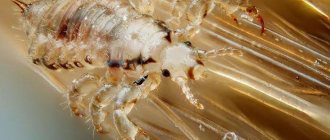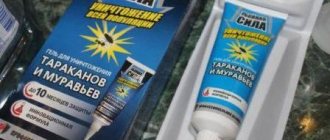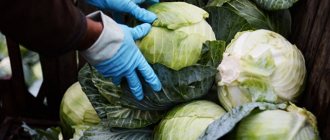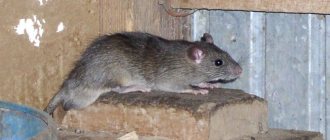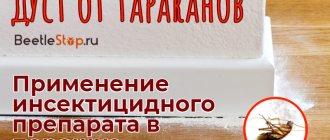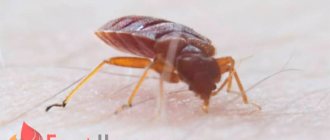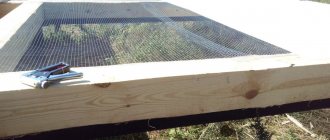Pediculosis is not only an aesthetic problem, but also a disease that needs to be fought. To do this, doctors treat the patient when lice is detected. Its main task is to destroy lice and nits and prevent them from spreading to other people. Ignoring this issue can have serious consequences, as lice infestation can cause typhus.
What is anti-pediculosis styling?
The head louse is a blood-sucking insect that lays eggs during its life. The cause of lice can be neglect of hygiene rules, as well as contact with someone who is sick with it. After a lice infestation, the first signs of lice do not appear immediately. Only after 2 weeks the patient can feel all the unpleasant consequences of the disease.
To destroy insects in public places, special treatment is carried out, for which special means are used. Anti-pediculosis styling is presented in various variations. It is always issued in the form of a kit and meets all sanitary standards.
Signs of lice
The following symptoms are characteristic of pediculosis:
- Itchy scalp.
- Rough spots on the skin that appear after parasite bites.
- Skin pigmentation resulting from hemorrhages in the tissue of the inflammatory process, which is provoked by the saliva of lice.
- Presence of tangles. The phenomenon is quite rare, but occurs when the hair gets tangled and stuck together with purulent-serous insect waste. Scratching can lead to secondary skin diseases such as dermatitis and eczema.
Pediculosis in an advanced form can manifest itself with an increase in temperature and swelling in the area of the lymph nodes.
Main points of the order
Order on pediculosis
The order on pediculosis, issued by the Ministry of Health of the Russian Federation in 1998, contains the following instructions:
- All health care organizations should organize an inspection of state epidemiological surveillance centers in the Lipetsk, Kostroma regions and Moscow for the prevention of typhoid epidemics and work to combat head lice.
- Conduct regular reviews of documentation and medical records of patients who have contracted typhus or Brill's disease.
- Develop standards for correct diagnosis and effective treatment of such patients.
- Conduct test control to test the professional knowledge of doctors in the field of diagnosis and treatment of pediculosis and typhus.
- Carry out organizational work and take preventive measures to reduce the likelihood of epidemics, to effectively combat pediculosis, guided by the documents attached to the order.
- Improving the financing of medical institutions for the purpose of purchasing drugs for the treatment and diagnosis of head lice and typhus, purchasing disinfection chambers for treating things and patients.
- Organize annual seminars for epidemiologists, hospital and laboratory staff to improve the diagnosis of diseases transmitted by lice.
- Creation of new and equipping existing special bacteriological laboratories for the diagnosis of the listed diseases.
- Provide treatment and prevention organizations and institutions with disinfection chambers, immunobiological preparations and preparations for lice removal.
- The media need to inform and warn the population about how to carry out personal and public prevention of head lice epidemics, and notify about effective methods of combating parasites.
Prevention of head lice
To prevent the appearance of parasites, you need to disinfect the room and change linen regularly. If the infection affects one of the family members, it is important to inspect all other residents of the apartment. If lice are found, you need to immediately begin to fight them. It is necessary to act comprehensively. The chemical method consists of using certain products and agents that include anti-pediculosis styling. Mechanical is based on the use of a comb, through which nits and their eggs will be removed from the hair.
Anti-pediculosis measures in schools and kindergartens
First of all, a preschool or school institution provides information. Despite the fact that many people have heard about lice, not everyone knows how lice are transmitted, how to correctly identify it, and even more so, how to treat it. That is why in schools and kindergartens information is posted on stands and communicated during parent-teacher meetings.
In addition, groups and classes are inspected monthly for the presence of head lice, and information about the results of inspections is recorded in an observation log. The check is carried out randomly, but if head lice is detected in a group or class, the checks become targeted, and the nurse monitors the class.
If we are talking about head lice, then there is no need to treat walls, floors and furniture in classrooms. According to the decree of the Chief Doctor of the Russian Federation dated 06/07/2017 (Appendix No. 2), only mats in the gym are subject to treatment. The situation changes if head lice are caused by body lice. In this case, furniture, floors, door handles and other furnishings of classrooms and public areas are treated with an anti-pediculosis agent.
If head lice is detected, the child is not allowed to attend classes without providing a certificate from a pediatrician. Moreover, in kindergartens and schools it is recommended to additionally examine the child after treatment.
Anti-pediculosis styling: composition
This installation must include:
- A bag or sack for placing the things of a person with lice into it.
- Tray for cut hair.
- Protective oilcloth cut.
- Rubber gloves.
- Scissors.
- Fine-tooth comb.
- Hair clipper.
- Alcohol lamp.
- Head scarf or plastic cap.
- Cotton wool.
- Table vinegar.
- Lice killer.
- Shampoo.
- Chemicals for treating rooms and bed linen.
- Sprayer.
- The robe is disposable.
- Instructions for using styling.
Executing the procedure
The patient's hair is processed. For this purpose, anti-pediculosis agents included in the styling are used. After this, a cap is put on the head. After 20 minutes, the curls are washed with shampoo from the set. Dried hair is combed strand by strand with a fine comb. Completion of the procedure involves the following steps:
- The patient's personal belongings are placed in bags for disinfection.
- All instruments used for the procedure (gloves, apron, gown) are placed in a bag.
- The patient's hair is examined again.
- After each inspection, the comb is doused with boiling water or treated with alcohol.
After the disinfection for which the anti-lice treatment was used is completed, the room and objects previously used by a person infected with lice are treated with special preparations.
Mode of application
Anti-pediculosis styling is done using a magnifying glass, a comb and rubber gloves.
Every hospital should have anti-pediculosis equipment to kill parasites. Also necessary for every medical institution is a bed for examination for head lice. It is designed for timely detection of lice and nits. It includes rubber gloves, a magnifying glass, a table lamp, a comb and a disinfectant solution for the comb.
Preparation
Having discovered parasites in a person, a medical professional must follow his job description. They indicate the following sequence of actions:
- Registration in the appropriate document (log No. 60).
- Sending a message about a parasitic disease to the patient’s place of residence.
- Recording in the medical history card.
- Destruction of lice. Sanitation for head lice is carried out, as well as actions aimed at cleaning the patient’s belongings and the premises where he was.
Before the treatment process, the doctor asks the infected person if there are any contraindications to the procedure. These include: pregnancy, breastfeeding, age under 5 years, skin diseases. The health care provider must adhere to patient rights and confidentiality. For the process of killing lice, a medical institution must have a special ventilated room.
After filling out the documentation and talking with the infected person, they begin the preparatory stage of processing. The specialist puts on a disposable gown, rubber gloves, and a headscarf. The patient sits on a chair and covers himself with oilcloth. The person should be given a towel to protect their eyes from the anti-lice medication.
Carrying out disinfestation activities
The drug is applied to damp hair and kept for 40 minutes.
Disinsection measures are divided into 2 sets of actions: extermination of parasites and disease prevention. The procedure for getting rid of lice using special styling includes the following steps:
- Treatment of hair with an anti-lice product, according to its instructions. For example, “Nittifor” is applied to damp hair, covered with a scarf and a towel. Leave the emulsion on your head for about 40 minutes.
- Washing hair in warm water. After this, shampoo is applied. After washing it off, wipe your head with a towel.
- Treatment of hair with 6% warm vinegar solution. You need to cover your head again with a scarf and a towel for 20 minutes.
- Rinse off the vinegar with warm water. After this the head is dried.
- Disinfecting the comb with vinegar. Using a comb, divide your hair into strands and comb each strand. Before this, you need to place light paper under your hair for dead parasites.
- If the patient agrees to cut his hair, then this is done over a basin, from which the hair is then burned.
- Inspect hair for remaining lice and nits.
After disinfestation measures, cleaning of anti-pediculosis styling tools begins:
- Burning paper with lice.
- Place the clothes of the patient and the orderly in a disposable bag, which is then sent to the disinfection chamber.
- Disinfection of the comb with boiling water.
- Repeated examination for pediculosis in a week.
Fighting body lice
To eliminate parasites living on clothing and other human belongings, measures such as boiling and ironing are used. For 15 minutes. clothes are boiled in a 2% soda ash solution and ironed on both sides. For a better effect, you can process things in a special chamber. Treatment with antiparasitic solutions is also popular: 0.15% aqueous emulsion of karbofos, pyrethrum powder.
Treatment of a patient with pubic lice
Carbosol is used for pubic lice.
In this case, the patient is recommended to shave the hair in the areas where the parasites live. Then the person and his sexual partner are treated, because this type of lice is sexually transmitted. The manipulation is carried out with special anti-pediculosis products of your choice - 0.5% chlorophos solution, Neofos, Carbozol aerosols. After the procedure, the room is ventilated. If necessary, the extermination of parasites is carried out again after a week.
Disinfection of premises
The procedure is carried out by specialists of the sanitary and epidemiological service or independently by the owner of the house. Experts use cold and hot fog to control insects. Hot fog is more effective, because it destroys parasites even in invisible areas and lasts longer, unlike cold fog. In addition, hot processing destroys viruses and bacteria. A few hours after treatment, the room needs to be ventilated and wet cleaned.
Self-disinfection is carried out using Medifox, Spray-Pax or Paraplus. They are used for processing clothes, but are also suitable for indoor use. The products are safe and do not cause poisoning or other problems. After using the products, you need to vacuum the house, wipe cabinets and shelves with vinegar.
